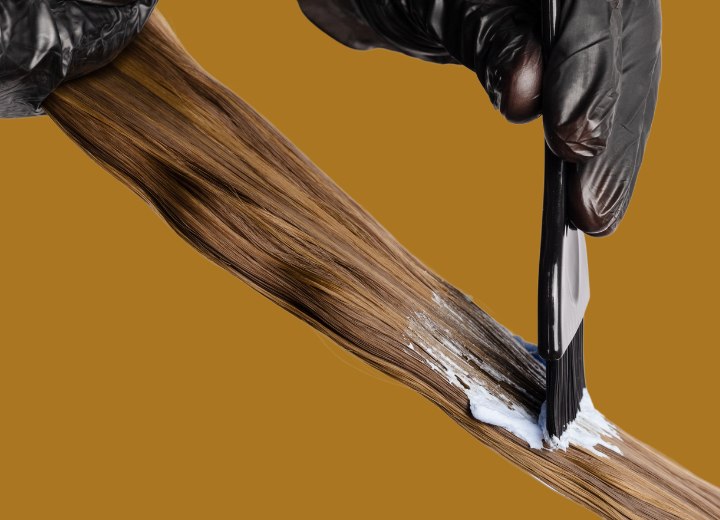Single Process Hair Color

Q: What is single process hair color? Is it safe and why would I want it?
A: Single process hair color is a hair coloring technique where a single formula is applied evenly throughout the entire head in one application. Unlike highlights, balayage, or double process coloring, this method uses just one step to achieve the desired shade.
The process is simple and effective:
1. Consultation: Your colorist evaluates your current hair color and discusses your desired outcome.
2. Color Mixing: A customized formula is prepared based on your hair type, condition, and goal shade.
3. Application: The color is evenly applied to your hair from roots to ends.
4. Processing Time: The color develops over a set time (typically 30-45 minutes) to achieve the desired depth and tone.
5. Rinse & Conditioning: The color is washed out, and a conditioning treatment is applied to keep hair healthy and shiny.
B. Benefits of Single Process Hair Color
Single process color offers many advantages, making it a popular choice:
• Full Gray Coverage: Ideal for covering grays completely and achieving a uniform look.
• Even, Consistent Color: Provides a solid, all-over shade without noticeable variations.
• Less Damage: Since it involves just one chemical process, it’s gentler on the hair compared to multi-step techniques like bleaching and toning.
• Time-Efficient: The process takes about 1-2 hours, making it quicker than complex coloring methods.
• Budget-Friendly: Typically more affordable than highlights or balayage, which require multiple steps and more product.
• Predictable Results: Because only one formula is used, the final result is easier to control and replicate.

C. Why You Should Choose Single Process Color
Single process color is ideal if you:
• Want to cover gray hair completely.
• Desire a darker shade or a subtle change (1-2 shades lighter or darker).
• Prefer a rich, uniform color without highlights or dimension.
• Need regular color maintenance without drastic transformations.
• Want a lower-cost alternative to multi-step coloring methods.
If you’re looking for a more dramatic color change, such as going significantly lighter, a double process treatment (which involves bleaching followed by toning) may be necessary.
D. Types of Single Process Hair Color
Not all single process colors work the same way. There are three main types:
• Permanent Color: Uses ammonia and hydrogen peroxide to open the hair cuticle, remove some natural pigment, and deposit new color. It offers the longest-lasting results but requires regular root touch-ups.
• Demi-Permanent Color: Contains less ammonia and developer, so it deposits color without significantly lightening hair. It fades gradually over time, making it a great option for less commitment and less damage.
• Semi-Permanent Color: Coats the outer layer of the hair without penetrating deeply. It washes out after 6-12 shampoos, making it ideal for trying out new shades without long-term commitment.

E. Choosing the Right and Safe Option for Your Hair
Selecting the best hair coloring method depends on several factors:
• Desired Outcome: If you want full gray coverage or a solid, even shade, single process is the best choice. If you prefer a multi-tonal or sun-kissed look, highlights or balayage might be better.
• Hair Health: If your hair is damaged or fragile, a gentler formula like demi-permanent color may be the safest option.
• Maintenance Commitment: Single process color needs regular touch-ups, typically every 4-6 weeks, to keep roots and color fresh.
• Budget Considerations: While single process color is more affordable per session, it may require more frequent visits compared to lower-maintenance techniques like balayage.
Single process hair color is a fantastic choice for achieving an even, polished look with relatively low maintenance and cost. Whether you want to cover grays, enhance your natural shade, or try a subtle change, this technique offers predictable and satisfying results. Consulting with your stylist will help ensure you choose the best formula for your hair’s needs and health.
©Hairfinder.com
See also: How to color hair